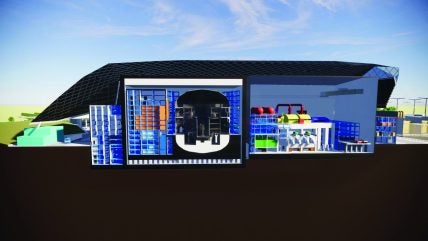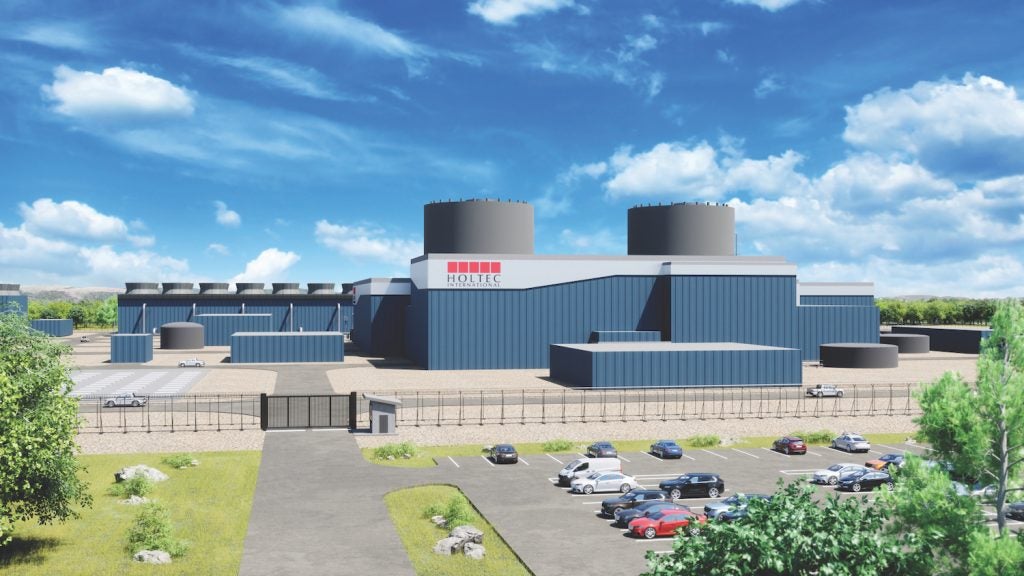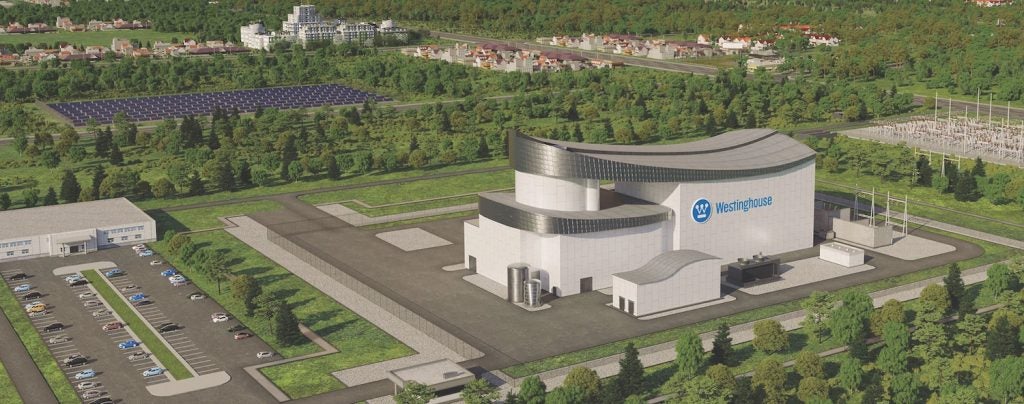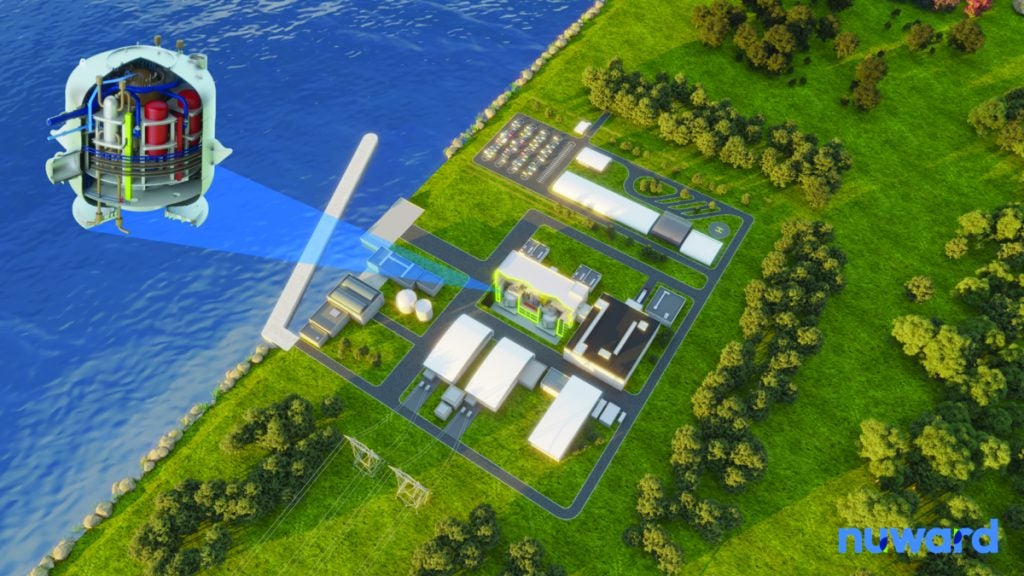
UK plans for Small Modular Reactor (SMR) development are progressing with the first reactor design submitted for a justification decision as the Great British Nuclear (GBN) SMR competition continues.
Most recently, the Nuclear Industry Association (NIA) applied for a justification decision for Rolls-Royce SMR’s reactor design by the UK regulatory authorities.
A necessary step in the licensing process before any new class or type of practice involving ionising radiation can be introduced in the UK, justification is a generic government decision based on a high-level evaluation of the potential benefits and drawbacks of the proposed new nuclear technology. A pre-cursor to additional regulatory processes, justification is not a permit to proceed with a specific project. The UK’s Department for Environment, Food & Rural Affairs (DEFRA) will now conduct a process of internal review and consultation with several statutory consultees.
The first ever application for justification of a UK reactor design, the NIA says it has made the case that the benefits far outweigh any potential risks given the robust safety features built into the design.
Commenting on the development Tom Greatrex, Chief Executive of the NIA, said: “Rolls-Royce SMR’s design, like other SMRs, offer huge possibilities for the UK to revive our industrial capabilities and deliver low-carbon energy for net zero and energy security. We are delighted to support this step to get the design approved in its home country. It is essential that our nuclear renaissance is made in Britain, so the new government should ensure that we deploy enough SMR designs to justify investment in the UK supply chain to deliver them.”
While the justification decision is on-going, Rolls Royce SMR is also working through a Generic Design Assessment (GDA) process. The company recently completed Step 2 of the GDA by UK nuclear industry regulators – the Office for Nuclear Regulation, the Environment Agency and Natural Resources Wales.
Rolls-Royce SMR is a three loop PWR rated at 470 MWe derived from 1,358 MWth. It will now proceed to Step 3 of the GDA – detailed assessment. “The completion of Step 2 of the GDA is the most important milestone to date in advancing deployment of Rolls-Royce SMRs in the UK,” said Helena Perry, Rolls-Royce SMR’s Safety & Regulatory Affairs Director.
Rolls-Royce SMR has received UK Government funding of £210m ($270m) as part of Phase 2 of the Low-Cost Nuclear Challenge Project, administered by UK Research & Innovation (UKRI). This has been supplemented by £280m of private capital. The Government support aims to accelerate the Rolls-Royce SMR design through the GDA process.
ONR’s GDA Step 2 statement said: “Based upon assessment to date ONR has not identified any significant issues that may prevent ONR from issuing a Design Assessment Confirmation (DAC).” Rolls Royce SMR argues that its progress through the assessment by the regulators confirms its position as significantly ahead of any other SMR design in Europe.
Rolls-Royce SMR has further announced plans to develop a prototype manufacturing and test facility for its SMR technology at the University of Sheffield. The Rolls Royce SMR application followed on from a new agreement recently signed with GSE Solutions to develop a power station simulator for its SMR designs. The simulator that will emerge from the £1.2m (US$1.5m) deal will play a key role in Rolls-Royce SMR’s programme to develop, verify and validate the performance and control systems of its design.
In a statement David Dodd, Rolls-Royce SMR Engineering Director, said: “Commissioning a simulation and test platform is another stride towards deploying the first Rolls-Royce SMR power plant. The work with GSE is part of our ‘digital-first’ methodology.”
Advancing the UK’s SMR assessment
Last October the government revealed that six companies had been selected to advance to the next phase of SMR competition and were invited to bid for government contracts due to be awarded shortly. The companies accepted were EDF, GE-Hitachi Nuclear Energy International LLC, Holtec Britain Limited, NuScale Power, Rolls-Royce SMR and Westinghouse Electric Company UK Limited.
The previous administration had a stated ambition is for up to a quarter of all UK electricity to come from nuclear power by 2050 with operational SMR technology anticipated to be in place by the mid-2030s.
The next stage of the process will be launched as soon as possible in which successful companies will be able to bid for government contracts. The ambition is to announce which of the six companies the government will support, with contracts expected to be awarded to be ready to enable a Final Investment Decision (FID) by 2029. This will entail funding to support technology development and site-specific design.
GE Hitachi’s BWRX-300 design has also begun the GDA programme which the UK’s Department for Energy Security and Net Zero has concluded can take approximately four years. GE Hitachi Nuclear Energy submitted its initial tender response as part of the GBN SMR programme last October. The company is also working with Ontario Power Generation developing the first unit at the Darlington NPP site near Toronto in Canada. Early site preparation work has been completed and construction is expected to start in early 2025 with commercial operation anticipated to commence by 2029. A total of four of the 300 MW units are planned for Darlington.
Commenting Andy Champ, GEH UK Country Leader, said: “We are confident that our SMR represents the lowest risk and highest reward choice for Great British Nuclear. We look forward to the outcome of the competition and the opportunity to play a pivotal role in helping to deliver not just Great British Nuclear’s ambitions, but also the new Government’s mission to make the UK a green energy superpower.” As part of this strategy GEH has said it is committed to developing a robust UK supply chain. More recently, in January 2024 GEH received a £33.6m (US$43m) Future Nuclear Enabling Fund (FNEF) grant from the Department for Energy Security & Net Zero (DESNZ). In conjunction with the awarding of this grant, GEH entered the GDA process. In July, GEH followed this by submitting a tender response and providing documentation in support of its BWRX-300 SMR as part of the GBN competition.
At the same time, Holtec Britain also submitted documentation in the UK in support of its SMR-300 design as part of its tender for the SMR competition. Holtec, which like GEH and Rolls Royce SMR is using a 300 MWe design, in this case a PWR, argues that its technology is consistent with the existing UK nuclear ecosystem and will facilitate modular construction of components in UK factories, which will be shipped to site for final assembly. However, they also state that the SMR-300 can use an air-cooling system to deliver heat and power in arid environments around the world. Holtec says that as part of its SMR plans it is strengthened by the collaboration with partners, including Hyundai Engineering & Construction, Balfour Beatty, and Mott MacDonald, signing a new Memorandum of Understanding this spring.

The company is also working to build its first two SMRs at the Palisades Nuclear Generating Station in Michigan by 2030. Holtec is also considering deployment of the SMR-300 at its Oyster Creek site on Barnegat Bay in New Jersey as part of the Mid-Atlantic Clean Hydrogen Hub (MACH2).
Furthermore, Holtec Britain has recently announced a shortlist of four UK sites for development of a new £1.3bn (US$1.65bn) SMR factory and production site. A final decision to select the final site in either South Yorkshire, the West Midlands, the Tees Valley or Cumbria is expected to be made in the autumn. It is expected that the site will produce between two and four reactors per year for the UK and export markets, including deployment of 5 GW of on-grid capacity in the UK by 2050.
May saw another shortlisted PWR SMR technology, the Westinghouse AP300, initiate the GDA process in the UK. “UK regulators are already very familiar with the AP300 SMR’s underpinning technology, so we look forward to working with them to progress the timely development and deployment of this advanced, proven technology,” said David Durham, Westinghouse Energy Systems President.

This GDA application comes after the AP300 SMR was selected for the next phase of GBN competition. In February 2023 the AP300 was also selected by Community Nuclear Power, Ltd. (CNP) for four SMRs that are planned for Teesside in Northeast England. CNP is working with strategic partners, including Jacobs and Interpath Advisory, to develop a fully licensed site for the project, with a target of 2027. This project is being privately funded.
In a statement NuScale said working with ENTRA1 Energy, an independent energy development and production company, it was proud to have submitted a tender response to GBN SMR competition. “With the only SMR tech that has completed R&D, secured regulatory approvals, and begun manufacturing, we are ready to deploy reliable, clean nuclear power in the UK,” it said in a statement. The development comes as RoPower Nuclear S.A., a subsidiary of the Romanian national nuclear energy producer Nuclearelectrica S.A., inked a deal with for Front-End Engineering and Design (FEED) Phase 2 with Fluor Corporation, advancing its mission to deploy an SMR in Romania. Deployment of the NuScale VOYGR-6 power SMR in Doiceşti, Romania is expected to be the first deployment of an SMR in Europe.
However, while five of the shortlisted reactor vendors submitted tender bids under the GBN contest, EDF elected to withdraw its Nuward design altogether. The decision reportedly relates to the time schedule required under the competition and the technological maturity of the reactor. It follows on from the recent move to modify the Nuward design and focus on existing technologies instead of continuing to pursue its innovative . The move reportedly followed talks with prospective European utility clients concerned over costs and delivery deadlines. Pivoting, EDF decided to “evolve the design” and build it exclusively from proven technological components. Nuward is a 340 MW PWR combining two 170 MWe reactors. The design included a nuclear island building that is semi-buried; a fully integrated reactor pressure vessel; a water immersed steel containment structure; a boron-free primary circuit; and passive cooling. In 2023, EDF signed an Exclusive Cooperation Agreement with Respect Energy to develop nuclear power projects in Poland at specific sites using its Nuward SMR. A co-operation agreement was also signed in 2024 with Ukraine’s Energoatom to study Nuward.

With the five shortlisted vendors having now submitted tender bids the SMR selection process is expected to be whittled down to the final two or three before the end of the year when contracts will be place. The contracts will co-fund further design development as well as the necessary regulatory, environmental and site-approvals before a final investment decision is taken in 2029.






